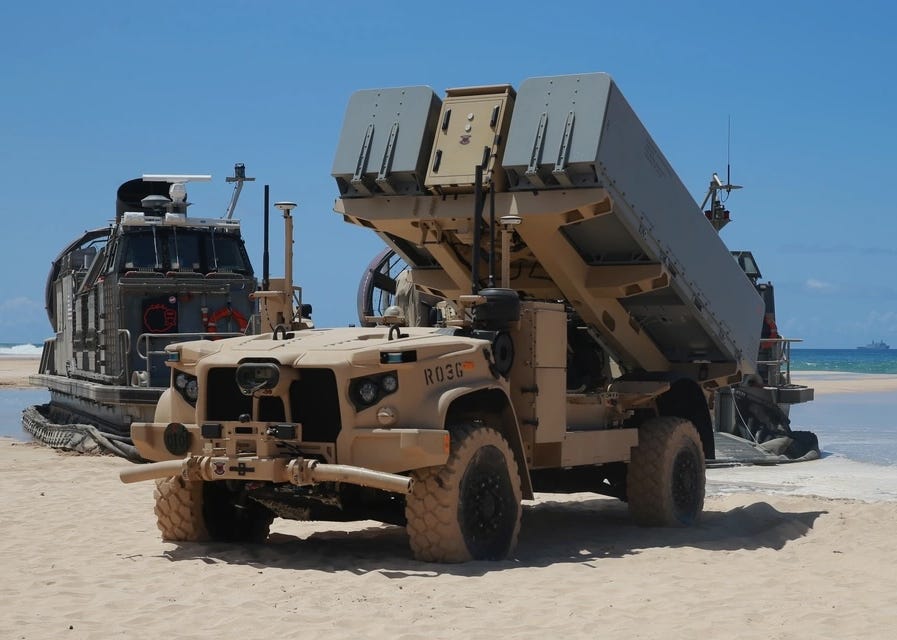
US Marine Corps photo by Maj. Nick Mannweiler, released
The US Marines deployed new ship-killing missile launchers at a strategic chokepoint south of Taiwan to deter growing Chinese aggression in the Pacific.
The Navy-Marine Expeditionary Ship Interdiction System (NMESIS) made its inaugural debut in the Philippines during Exercise Balikatan, which means “shoulder-to-shoulder” in Tagalog.
More than 14,000 troops from the Philippines and the US participated in the exercise, which began on April 21 and runs until May 9, as well as contingents from Australia and, for the first time, and Japan, making it the largest iteration of the exercise to date.
Developed to “simulate the defense of Philippine sovereignty,” the NMESIS will be used in simulated fire drills taking place on the Batanes Islands, which are seen as key strategic locations near Taiwan and mainland China. The NMESIS fires a guided missile with the range to strike ships in the Bashi channel between the Batanes islands and Taiwan.
Ground-based ship-killer
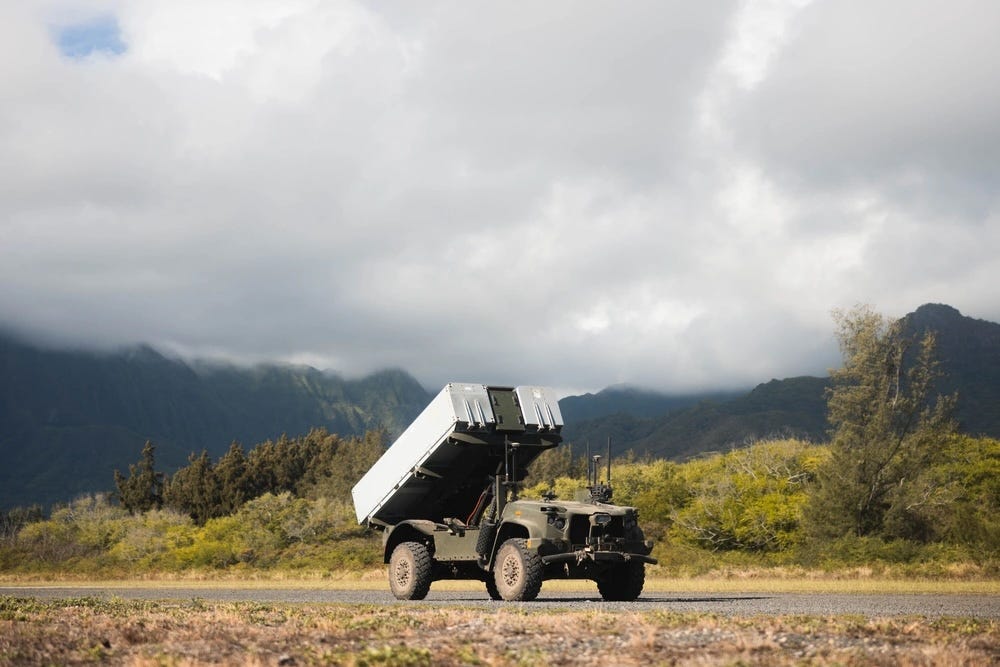
US Marine Corps photo by Cpl. Eric Huynh
The NMESIS is a missile system mounted on an uncrewed 4-wheel truck developed as part of the Force Design initiative, a modernization plan to restructure the US Marine Corps for naval expeditionary warfare, particularly in the Indo-Pacific.
A standard NMESIS unit will include 18 launchers, and the Marines plan to field 14 such batteries by 2030 — three of which are planned to be stationed in the Pacific region.
Naval Strike Missile
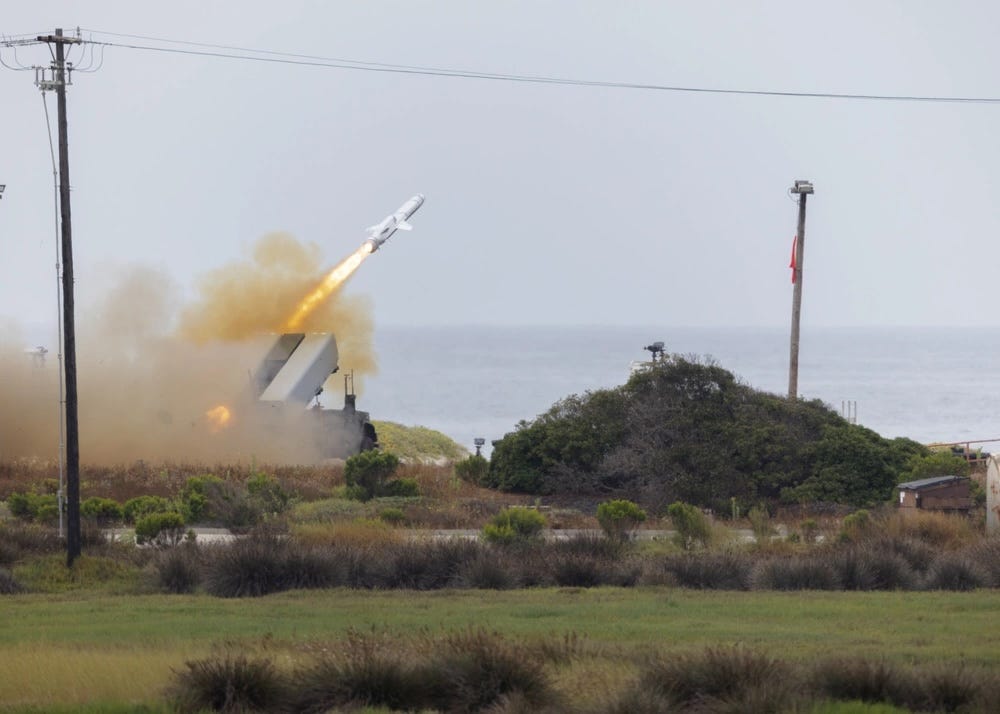
US Marine Corps photo by Cpl. Earik Barton
The NMESIS is designed to fire the Naval Strike Missile (NSM), a long-range precision strike weapon designed to hit heavily defended surface ships and land targets.
Manufactured by Norwegian defense supplier Kongsberg Defence Systems in partnership with RTX, NSMs are highly survivable and maneuverable with a range of over 120 miles.
The subsonic, sea-skimming missiles, which cost nearly $2 million each, can accurately home in on a target without electronic interference, guided by an onboard infrared system, GPS, and terrain-based navigation.
In November, Kongsberg was awarded a $900 million military contract to supply NSMs to the Navy and Marines.
Uncrewed vehicle-launcher
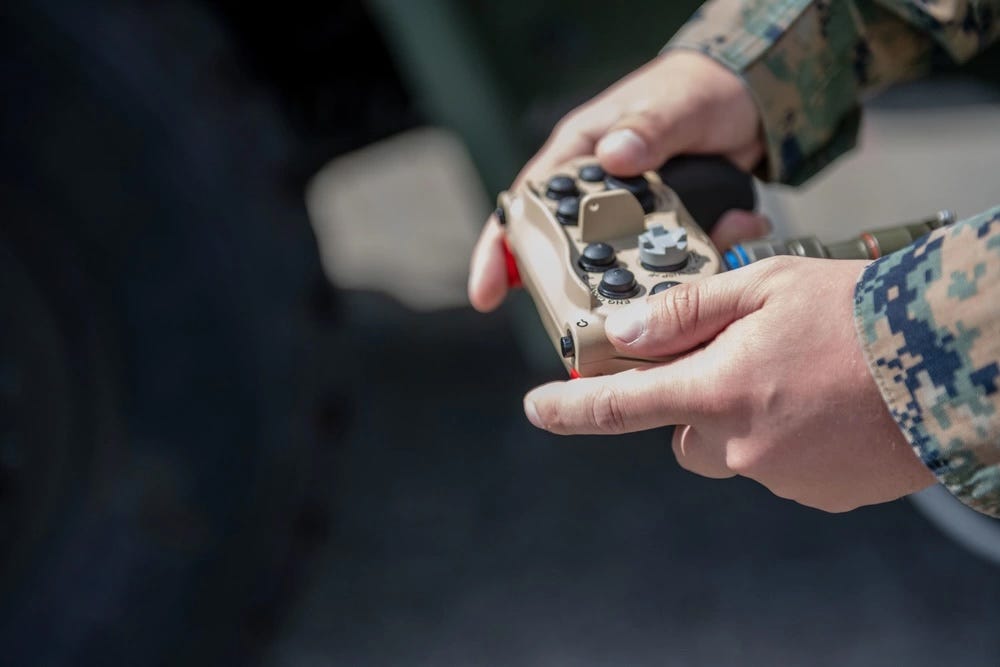
US Air Force photo by Senior Airman Lauren Jacoby
Carrying two ready-to-fire NSMs in its canisters, the NMESIS launcher is mounted on an uncrewed Joint Light Tactical Vehicle chassis known as ROGUE-Fires (Remotely Operated Ground Unit for Expeditionary Fires), which allow it to be controlled remotely or autonomously over difficult terrain.
“Marines can control the ROGUE-Fires with a game-like remote controller or command multiple launchers to autonomously follow behind a leader vehicle,” according to a Marine Corps statement.
‘Full battle test’
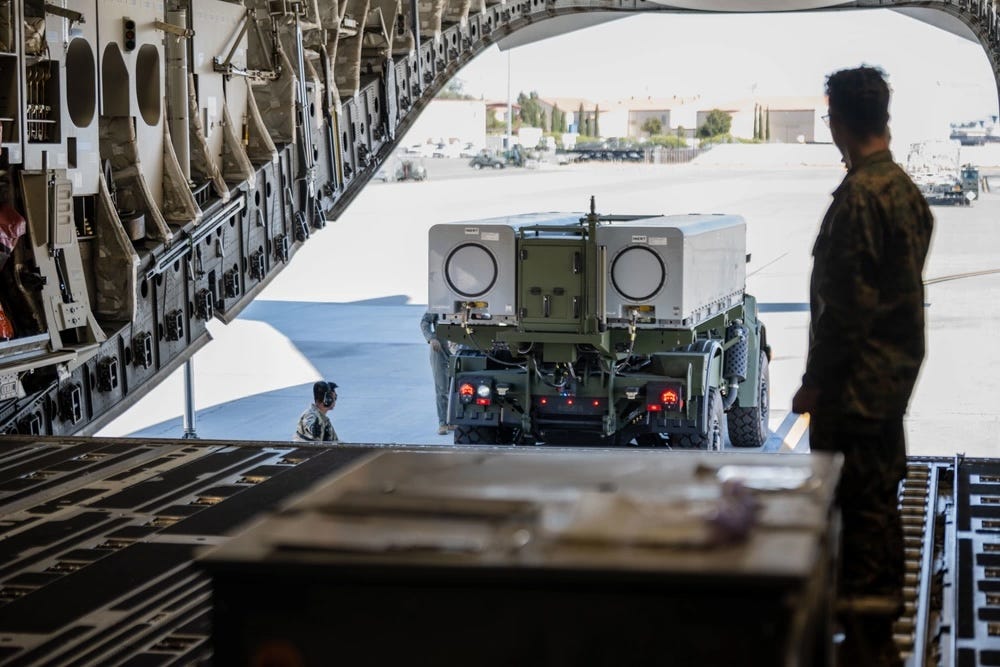
US Air Force photo by Senior Airman Lauren Jacoby)
The three-week-long Balikatan exercises will focus on anti-ship, anti-air, and coastal defense drills simulating real-world combat, including missile defense, invasion deterrence, and live-fire and strike tests on a decommissioned vessel.
“The full battle test is intended to take into consideration all of the regional security challenges that we face today, beginning in the South China Sea,” Lieutenant General James Glynn, the US director for the exercise, said during a media briefing.
Maj. Gen. Francisco Lorenzo, the Philippine director for Balikatan, said the drills were not intended to be a show of force against China but acknowledged that they could act as a deterrent against conflict in Taiwan.
“The Balikatan exercise may probably help deter the conflict in Taiwan,” Lorenzo said in a statement. “But for our concern, it is only for deterrence of any possible coercion or invasion to our country.”
Strategic chokepoints near Taiwan
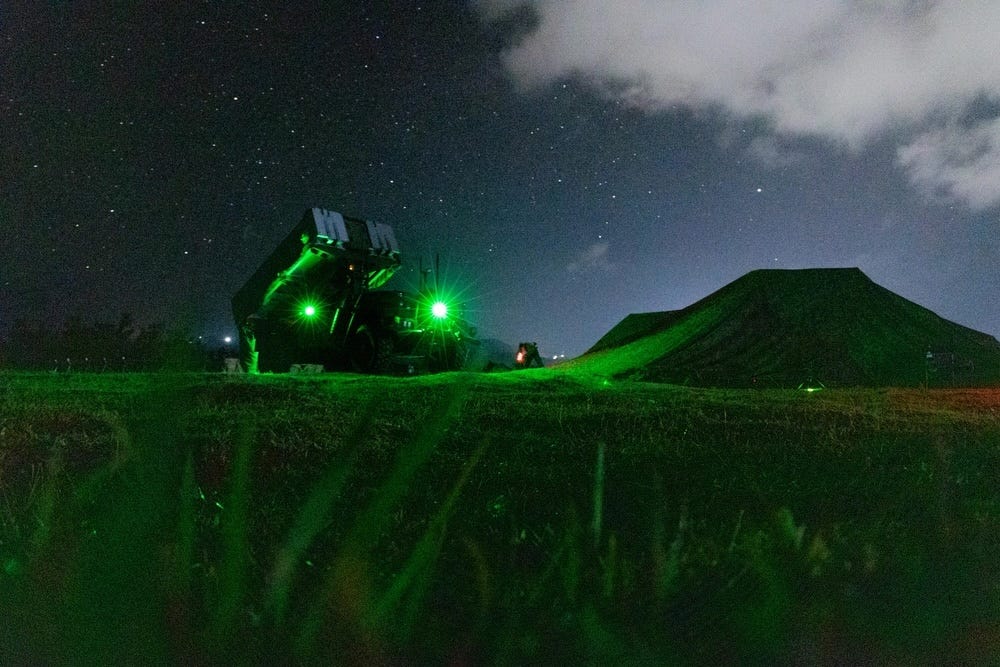
US Marine Corps photo by Lance Cpl. Maksim Masloboev
During Exercise Balikatan, the NMESIS launchers will be airlifted from Northern Luzon to the Batanes Islands, where US and Philippine Marines will establish an expeditionary fires base.
Located about 120 miles from Taiwan’s southern coast, the Batanes Islands are positioned near the Luzon Strait and the Bashi Channel, which connects the Philippine Sea and the South China Sea, setting up a significant — albeit high-risk — anti-access strategy against China.
“The Luzon Strait and Bashi Channel represent a critical access point to enter or exit the Pacific Ocean from the South China Sea and Taiwan Strait, and the deployment of NMESIS allows the US to assert control over that access,” Ben Lewis, a cofounder of PLATracker, an organization that tracks Chinese military activity, told Naval News.
With the anti-ship missile’s baseline range of over 100 nautical miles, any vessel transiting in waters from the southern tip of Taiwan to northern Luzon could be targeted by the NMESIS deployment to the Batanes chain.
Typhon missile launcher
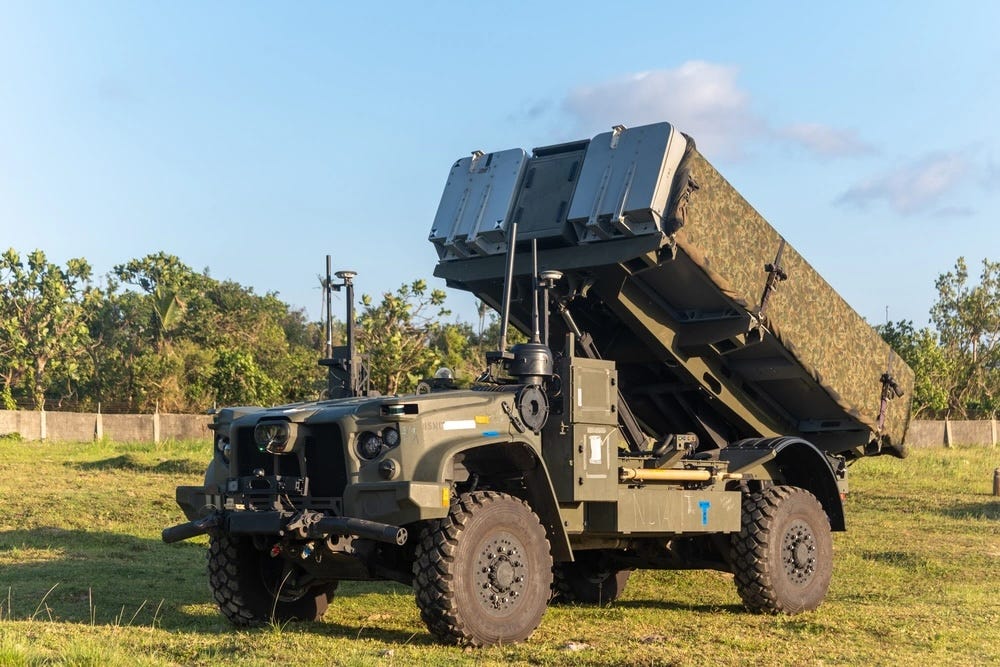
US Marine Corps photo by Chief Warrant Officer 2 Trent Randolph
The military also temporarily deployed the mid-range Typhon missile system to the Laoag Airfield in northern Luzon as part of Exercise Balikatan in April 2024. Instead of being removed, the Typhon systems were relocated last December and will remain stationed in the Philippines indefinitely.
Operated by the US Army, the Typhon Weapon System is capable of firing Tomahawk cruise missiles, which have a range of 1,000 miles, and SM-6 interceptor missiles, which can hit targets nearly 300 miles away.
Threat to China’s area denial strategy

US Navy photo by Courtesy Asset
In mid-April, China condemned the joint US-Philippine military drills, saying it “firmly opposes any country” using Taiwan as an “excuse” to strengthen its military posture in the region and “provoke tension and confrontation.”
“The parties concerned are advised not to provoke on the Taiwan issue, and those who play with fire will burn themselves,” Chinese foreign ministry spokesperson Guo Jiakun said during an April 21 briefing.
The post See the ship-killing missile that US Marines deployed to a hot spot near Taiwan appeared first on Business Insider.




